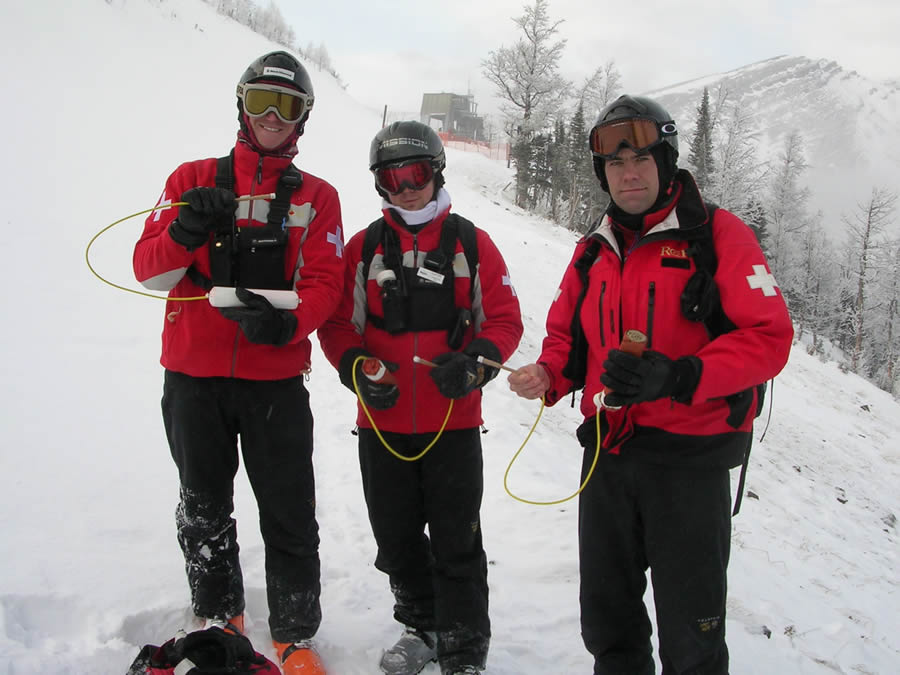TRAINING

Typical courses range from 2-4 days in length and would involve both classroom theory and hands-on field exercises. Course locations vary based on the type of course being presented, the availability of suitable blasting sites and the location of the customer(s). Ideally, courses are presented close to the participant’s home base in order to minimize costs.
Typical courses range from 2-4 days in length and would involve both classroom theory and hands-on field exercises. Course locations vary based on the type of course being presented, the availability of suitable blasting sites and the location of the customer(s). Ideally, courses are presented close to the participant’s home base in order to minimize costs.

Avalanche Control Training
Quoting from Alberta Human Services regulations:
“In Alberta, any worker who handles, prepares, fires, burns or destroys an explosive must hold a valid permit issued by Alberta Human Services or a valid inter-provincial permit acceptable to Human Services.”
A worker can qualify for a blaster’s permit by:
- completing a Human Services approved course; or
- having six months’ experience and the employer’s recommendation; or
- having a valid blaster permit from another Canadian jurisdiction.
Qualified persons may apply for a blaster’s permit by submitting an application and a copy of the course completion certificate.
At the current time, there are 9 recognized non-mining blasting designations in Alberta. DAMet Services has 5 blaster training courses that are accepted by Alberta Human Services as approved training alternatives to obtain a specific Alberta blasters permit. These courses are:
- Beaver Dam Control
- Avalanche Control
- Surface Blasting
- Boiler Cleaning
- Wildlife Capture
Other courses can be designed to meet the unique requirements of a customer. New courses requires subsequent approval of the Director responsible for issuing blasters permits in Alberta before any training could proceed.
The classroom theory
The classroom theory typically includes:
Provincial and Federal explosive regulations
- Permitting requirements and application forms
- Purchasing, Storage and Transportation (note: this is not a TDG course)
- Explosive energy theory and classes of explosive materials
- Product groups typically used in the course specific applications
- Application Theory
- Handling Safety
- Blast Site security and safety
- Tools and equipment
The field exercises
The field exercises portion includes topics such as:
- Magazine inspection and requirements
Transportation requirements including storage and TDG paperwork
Blast site inspection
On site storage and security
- Blast pattern review.
- Charge preparation
- Hole loading
- Pattern tie in
- Blast firing
- Post blast inspection
Completion of blast logs and transport paperwork
Typical courses range from 2-4 days in length and would involve both classroom theory and hands-on field exercises. Course locations vary based on the type of course being presented, the availability of suitable blasting sites and the location of the customer(s). Ideally, courses are presented close to the participant’s home base in order to minimize costs.
Typical courses range from 2-4 days in length and would involve both classroom theory and hands-on field exercises. Course locations vary based on the type of course being presented, the availability of suitable blasting sites and the location of the customer(s). Ideally, courses are presented close to the participant’s home base in order to minimize costs.

Avalanche Control Training
Quoting from Alberta Human Services regulations:
“In Alberta, any worker who handles, prepares, fires, burns or destroys an explosive must hold a valid permit issued by Alberta Human Services or a valid inter-provincial permit acceptable to Human Services.”
A worker can qualify for a blaster’s permit by:
- completing a Human Services approved course; or
- having six months’ experience and the employer’s recommendation; or
- having a valid blaster permit from another Canadian jurisdiction.
Qualified persons may apply for a blaster’s permit by submitting an application and a copy of the course completion certificate.
At the current time, there are 9 recognized non-mining blasting designations in Alberta. DAMet Services has 5 blaster training courses that are accepted by Alberta Human Services as approved training alternatives to obtain a specific Alberta blasters permit. These courses are:
- Beaver Dam Control
- Avalanche Control
- Surface Blasting
- Boiler Cleaning
- Wildlife Capture
Other courses can be designed to meet the unique requirements of a customer. New courses requires subsequent approval of the Director responsible for issuing blasters permits in Alberta before any training could proceed.
The classroom theory
The classroom theory typically includes:
Provincial and Federal explosive regulations
- Permitting requirements and application forms
- Purchasing, Storage and Transportation (note: this is not a TDG course)
- Explosive energy theory and classes of explosive materials
- Product groups typically used in the course specific applications
- Application Theory
- Handling Safety
- Blast Site security and safety
- Tools and equipment
The field exercises
The field exercises portion includes topics such as:
- Magazine inspection and requirements
Transportation requirements including storage and TDG paperwork
Blast site inspection
On site storage and security
- Blast pattern review.
- Charge preparation
- Hole loading
- Pattern tie in
- Blast firing
- Post blast inspection
Completion of blast logs and transport paperwork
